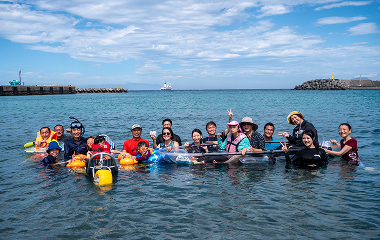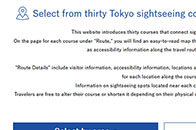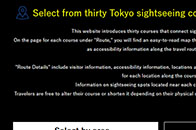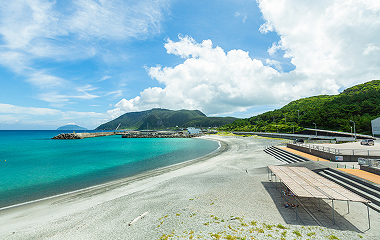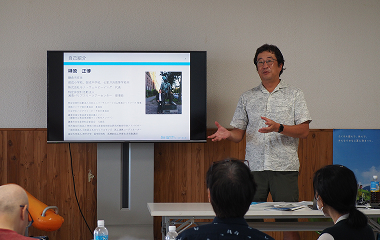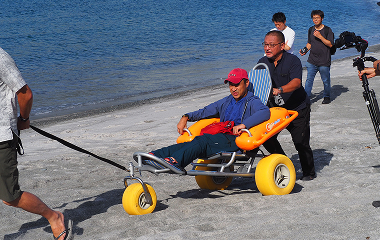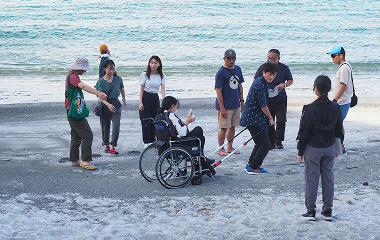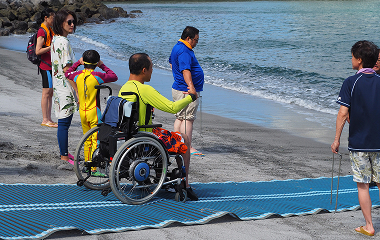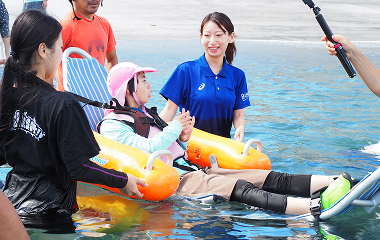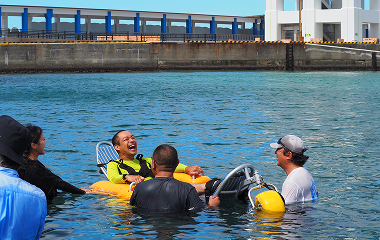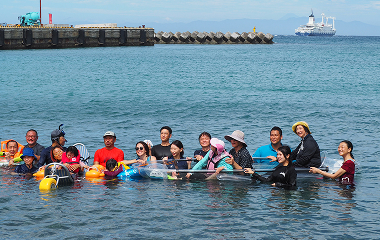“The ocean isn’t just something you look at. It’s for
people to go in and take a swim. And so barrier-free beaches are really
fun for people with disabilities and their caregivers,” says Masahiro Sakakibara, Chair of the Shonan Barrier-Free Tour Center, who served as a lecturer for this tester tour. Indeed, the people with disabilities who participated in the test tour noted: “Honestly I was surprised at how much fun it was. My daughter, who has a disability, really came alive, and for my part I had lots of fun, too! The amphibious wheelchair is wonderful! As her parent and as a person without any disabilities, I really enjoyed myself at the ocean. I think the rentals are great for going to the ocean, so when we go again I definitely want to do a rental.” “Using a specialized device, and with everyone’s verbal support, I was able to relax and enjoy the ocean like I normally wouldn’t.” These are some of the many positive comments received.
